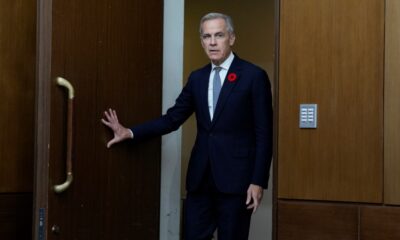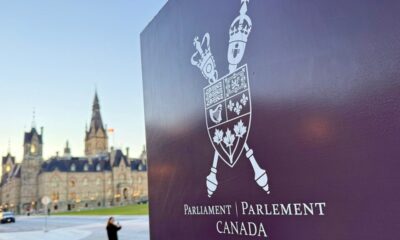Top Stories
Canada Collects $3B from U.S. Tariffs Before Major Cuts

UPDATE: Canada has collected over $3 billion from U.S. counter-tariffs, but the majority of these tariffs were lifted in September, raising questions about future revenue. This significant development comes as the Liberal government faces a deeper deficit than previously anticipated and prepares to unveil this year’s budget on Tuesday.
Prime Minister Mark Carney announced the removal of many tariffs to facilitate trade negotiations with Washington, despite the government’s earlier projections estimating potential revenue of $20 billion from retaliatory levies on U.S. goods for the fiscal year. “The value of those retaliations was diminishing,” Carney stated while attending a summit in Malaysia.
The Finance Department highlighted that the collected $3 billion does not account for amounts redistributed to affected industries, which could further impact the budget. Carney emphasized the economic drawbacks of maintaining such tariffs, noting, “There is a cost at home for those tariffs.”
In response to the tariff cuts, Finance Minister François-Philippe Champagne defended the government’s decision, stating, “We need to adapt and review our posture.” He acknowledged that the removal of these tariffs was intended to support Canadian industries, even as the government braces for potential revenue shortfalls.
Economic experts are sounding alarms. Bill Robson, president and CEO of the C.D. Howe Institute, warned that relying on tariffs for revenue is unsustainable, asserting, “Tariffs are a very damaging way of raising revenue.” As the government adjusts its fiscal strategies, anticipation builds around the upcoming budget, which is expected to reveal more concerning financial projections.
The Canadian Steel Producers Association’s president, Catherine Cobden, expressed concerns about the exemptions granted on various steel and aluminum imports. Cobden criticized the government’s approach, advocating for a focus on exempting products that are not produced domestically. She highlighted that the exemption process needs reform to prevent further revenue losses and support local industries.
As the government prepares to present its budget, the implications of these tariff changes are profound. The Finance Department has promised additional details on tariff collections, which will likely shape Canada’s economic landscape moving forward.
With trade tensions continuing to evolve, eyes will be on the government’s next moves and how they will navigate the delicate balance between fostering international relations and supporting domestic industries.
Stay tuned for updates as this situation develops.
-

 World4 months ago
World4 months agoScientists Unearth Ancient Antarctic Ice to Unlock Climate Secrets
-

 Entertainment4 months ago
Entertainment4 months agoTrump and McCormick to Announce $70 Billion Energy Investments
-

 Lifestyle4 months ago
Lifestyle4 months agoTransLink Launches Food Truck Program to Boost Revenue in Vancouver
-

 Science4 months ago
Science4 months agoFour Astronauts Return to Earth After International Space Station Mission
-

 Technology2 months ago
Technology2 months agoApple Notes Enhances Functionality with Markdown Support in macOS 26
-

 Top Stories3 weeks ago
Top Stories3 weeks agoUrgent Update: Fatal Crash on Highway 99 Claims Life of Pitt Meadows Man
-

 Sports4 months ago
Sports4 months agoSearch Underway for Missing Hunter Amid Hokkaido Bear Emergency
-

 Politics3 months ago
Politics3 months agoUkrainian Tennis Star Elina Svitolina Faces Death Threats Online
-

 Politics4 months ago
Politics4 months agoCarney Engages First Nations Leaders at Development Law Summit
-

 Technology4 months ago
Technology4 months agoFrosthaven Launches Early Access on July 31, 2025
-

 Top Stories1 week ago
Top Stories1 week agoFamily Remembers Beverley Rowbotham 25 Years After Murder
-

 Entertainment4 months ago
Entertainment4 months agoCalgary Theatre Troupe Revives Magic at Winnipeg Fringe Festival



















